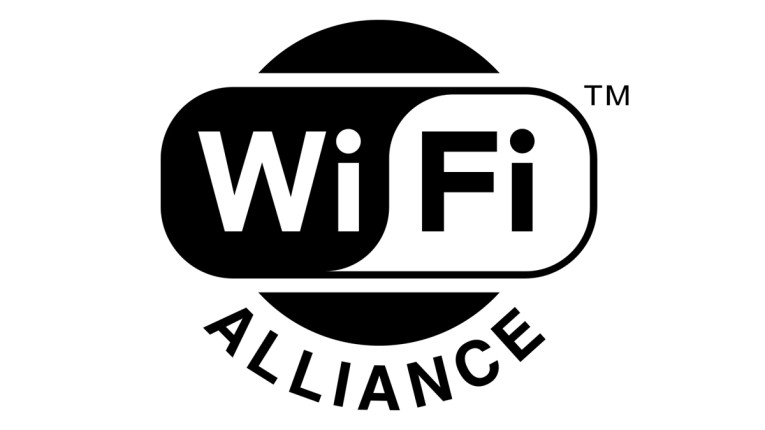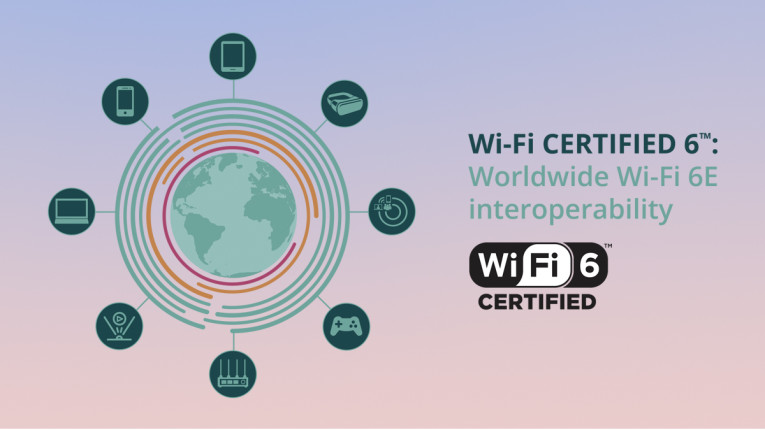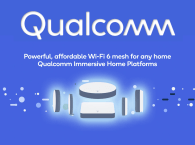
The new advancements now confirmed by the Wi-Fi Alliance are available for each program, benefiting users and service providers, while home Wi-Fi networks supporting both Wi-Fi Easy Connect and Wi-Fi EasyMesh establish smarter networks that are interoperable, secure, easy to set up, flexible, and extend high quality Wi-Fi throughout the home.
"Today’s homes are built on Wi-Fi, and Wi-Fi Certified continually progresses to deliver more advanced Wi-Fi networks that meet the needs of increasingly diverse devices and services," says Kevin Robinson, senior vice president of marketing, Wi-Fi Alliance. "By making it easier to set up and manage Wi-Fi networks, while still supporting strong security and ensuring consistent home coverage, Wi-Fi is helping to advance the connected home experience."
Wi-Fi Easy Connect simplifies the process of adding Wi-Fi devices with limited or no display interface – such as smart doorbells, lightbulbs, or smoke detectors – to both home and enterprise Wi-Fi networks, while supporting advanced WPA3 security. New features available for Wi-Fi Easy Connect enable simple and flexible network authentication and onboarding, and introduce two new onboarding and configuration methods: zero touch cloud-based technology or Near Field Communication (NFC) tag. Onboarding by scanning the quick response (QR) code is still available.
The easy process allows devices to gain secure network access using the latest security protocols, and devices will remain configured when there is a change to network settings, including a change in SSID. Based on public-key cryptography, Wi-Fi Easy Connect provides the ability to strongly authenticate and manage individual devices on the network and enforce network security policies on an individual device basis.
Wi-Fi EasyMesh networks employ multiple access points working together to form a unified mesh network that provides smart, high-performance Wi-Fi coverage throughout the home. With support for Wi-Fi 6, Wi-Fi EasyMesh extends the latest generation of Wi-Fi throughout the home and delivers greater capacity, reduced latency, and advanced features to support more simultaneous services and applications. Wi-Fi EasyMesh supports configuration of traffic prioritization policies for improved experiences in low latency applications – such as ensuring real-time, interactive video display is not impacted by less time-sensitive applications. Wi-Fi EasyMesh provides enhanced diagnostics and metrics with full support for Wi-Fi Data Elements, enabling service providers to more proactively identify and resolve Wi-Fi network issues. Wi-Fi EasyMesh can also leverage Wi-Fi Easy Connect for user-friendly onboarding of additional access points to further extend home network coverage where it is needed.
Wi-Fi Easy Connect and Wi-Fi EasyMesh reduce complexity of Wi-Fi home networks, improve security and network management capabilities, and drive a better experience for a variety of home Wi-Fi applications and services.
"As one of the original contributors to the Wi-Fi Easy Connect and Wi-Fi EasyMesh specifications, CommScope fully supports the continued evolution of these programs to make it easy as possible for consumers to get the vital services they need for their digital lives from the Wi-Fi home. The goal of these two programs aligns with CommScope’s own goal of seamless onboarding of Wi-Fi devices in the home, as well as the ability to introduce multi-vendor meshing access points into the home ecosystem for both consumer retail investment and service provider driven solutions," says Charles Cheevers, CTO, Home Networks, CommScope.
"Standards-based technologies for simply and securely on-boarding devices, while supporting peak performance across today's popular mesh-style networks, are imperative given today's massive acceleration in Wi-Fi demand. Qualcomm Technologies has long been committed to driving seamless and immersive experiences, with a pioneering history of advancing mesh networking and solving complex provisioning challenges, and we look forward to continued support of Wi-Fi Easy Connect and Wi-Fi EasyMesh across our Wi-Fi product portfolio," adds Rahul Patel, senior vice president and general manager, Connectivity and Networking, Qualcomm Technologies.

Wi-Fi Interoperability in 6 GHz
The Wi-Fi Alliance has also confirmed that certification for Wi-Fi 6E is now available to deliver interoperability for devices operating in the 6 GHz spectrum. Interoperability certification for Wi-Fi 6E was introduced as global momentum for Wi-Fi operation in the 6 GHz band increases daily. Wi-Fi 6E brings the immense benefits of 6 GHz spectrum to consumers, device manufacturers, and service providers as the band is being made available around the world.
Following the decision by the U.S. Federal Communications Commission to open 1200 MHz of 6 GHz spectrum for Wi-Fi use, the U.K., Europe, Chile, South Korea, and the United Arab Emirates have also made the decision to deliver 6 GHz for Wi-Fi. Countries including Brazil, Canada, Mexico, Peru, Taiwan, Japan, Saudi Arabia, Myanmar, and Jordan are quickly progressing towards opening 6 GHz for unlicensed operation. Wi-Fi Alliance is delivering on its promise to make certification for Wi-Fi 6E products available as the spectrum becomes available. Multiple product vendors are already announcing Wi-Fi 6E devices that make use of the superwide 160 MHz channels and uncongested bandwidth in 6 GHz to deliver multigigabit, low latency Wi-Fi.
www.wi-fi.org







